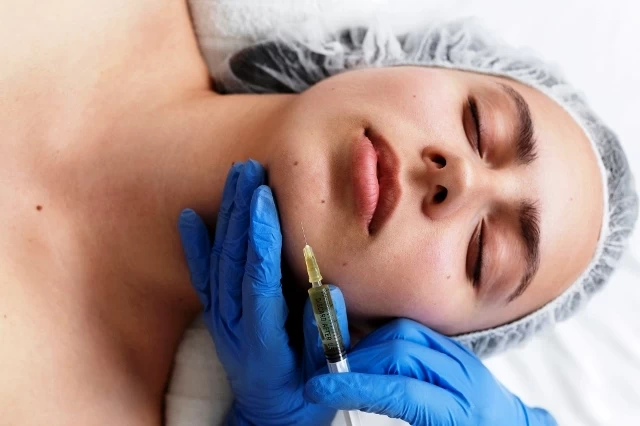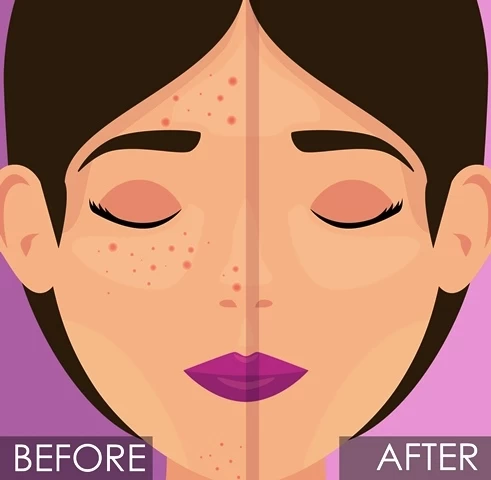
Hyperpigmentation Treatment in Dermatology
- Hyperpigmentation Treatment in Dermatology
- What are the Types of Hyperpigmentation on the Skin?
- What is Hyperpigmentation Treatment?
- What are the Methods Used in Hyperpigmentation Treatment in Dermatology?
What are the Types of Hyperpigmentation on the Skin?
There are various types of hyperpigmentation that can occur on the skin due to different reasons. Here are some common types of skin hyperpigmentation:
- Sunspots: These are spots that appear as a result of prolonged sun exposure. They are often seen on the face, hands, arms, and décolletage. Sunspots are usually brown or dark in color.
- Age Spots (Lentigo): These are brown spots that emerge as a part of the aging process. They commonly occur on the hands, face, and other sun-exposed areas.
- Melasma: Melasma is usually associated with hormonal changes and manifests as symmetric brown patches on the face. Factors like pregnancy, birth control pill usage, or hormone therapy can increase the risk of melasma.
- Birthmarks: These are marks that appear on a baby's skin at birth. They are typically brown or bluish in color. Most birthmarks fade over time, but some can be permanent.
- Post-Inflammatory Hyperpigmentation: These are dark-colored spots that develop as a result of skin damage or irritation, such as acne, pimples, wounds, or skin infections. They often fade on their own as the skin heals.
- Café-au-Lait Spots: Café-au-lait spots are brown spots that usually appear at birth or during childhood. These spots are generally harmless, but if they are large or numerous, medical examination may be required.
- Vitiligo: Vitiligo is a condition that affects pigment production in the skin. It leads to the development of white, depigmented patches on the skin. It is commonly observed symmetrically on different parts of the body.
These are just some of the types of hyperpigmentation, and each may have different causes and characteristics. Dermatologists can perform a skin examination to determine the type of hyperpigmentation and recommend appropriate treatment.
What is Hyperpigmentation Treatment?
Hyperpigmentation treatment in dermatology involves various methods aimed at reducing or completely eliminating the appearance of skin pigmentation. The treatment for hyperpigmentation can vary depending on the cause of the pigmentation, size of the affected area, skin type, and personal preferences.

What are the Methods Used in Hyperpigmentation Treatment in Dermatology?
Here are some commonly used methods in hyperpigmentation treatment:
- Topical Treatments: These are cream, lotion, or gel formulations applied to the skin to treat pigmentation. These products contain active ingredients that lighten the pigmentation or accelerate the skin cell renewal process. Commonly used components in this treatment include hydroquinone, retinoids, azelaic acid, vitamin C, and kojic acid.
- Chemical Peels: Chemical peels involve the use of chemical solutions to exfoliate the upper layer of the skin. This method targets the pigmented area of the skin and removes the outer layer, revealing a younger and healthier skin layer. Chemical peels can be effective in treating conditions like sunspots, age spots, and melasma.
- Microdermabrasion: Microdermabrasion is a method that mechanically exfoliates the upper layer of the skin using microscopic crystals. This gentle exfoliation targets the pigmented area and reduces the appearance of hyperpigmentation. Multiple sessions may be required.
- Laser Treatment: Laser treatment aims to reduce or eliminate hyperpigmentation by applying high-energy laser beams to the skin. The laser targets the melanin pigment in the skin, thus reducing or removing the pigmentation. Laser treatment can be effective for different types of hyperpigmentation, including sunspots, age spots, birthmarks, and café-au-lait spots.
- Intense Pulsed Light (IPL) Treatment: IPL treatment involves targeting the pigmented areas of the skin with high-intensity pulsed light. IPL can lighten or remove pigmentation by targeting the pigments in the skin. Multiple sessions may be required.
- Cryotherapy: Cryotherapy involves freezing the pigmented area of the skin to treat hyperpigmentation. Liquid nitrogen is applied to the pigmented area, causing it to freeze and eventually peel off. Cryotherapy is commonly used for treating small hyperpigmented lesions.
- Surgical Procedures: In some cases, surgical interventions may be required for the treatment of deep, persistent, or extensive hyperpigmentation. Procedures such as skin grafting, dermabrasion, or dermoplasty may be used. These procedures are usually preferred for more severe cases of hyperpigmentation.
The methods used and their effectiveness in hyperpigmentation treatment can vary depending on the type of pigmentation, depth of pigmentation, and individual factors. A dermatologist will conduct a skin analysis to recommend the most suitable treatment method and create a treatment plan. During the hyperpigmentation treatment process, regular use of sun protection is also important as it is a crucial step in preventing or treating sunspots.






